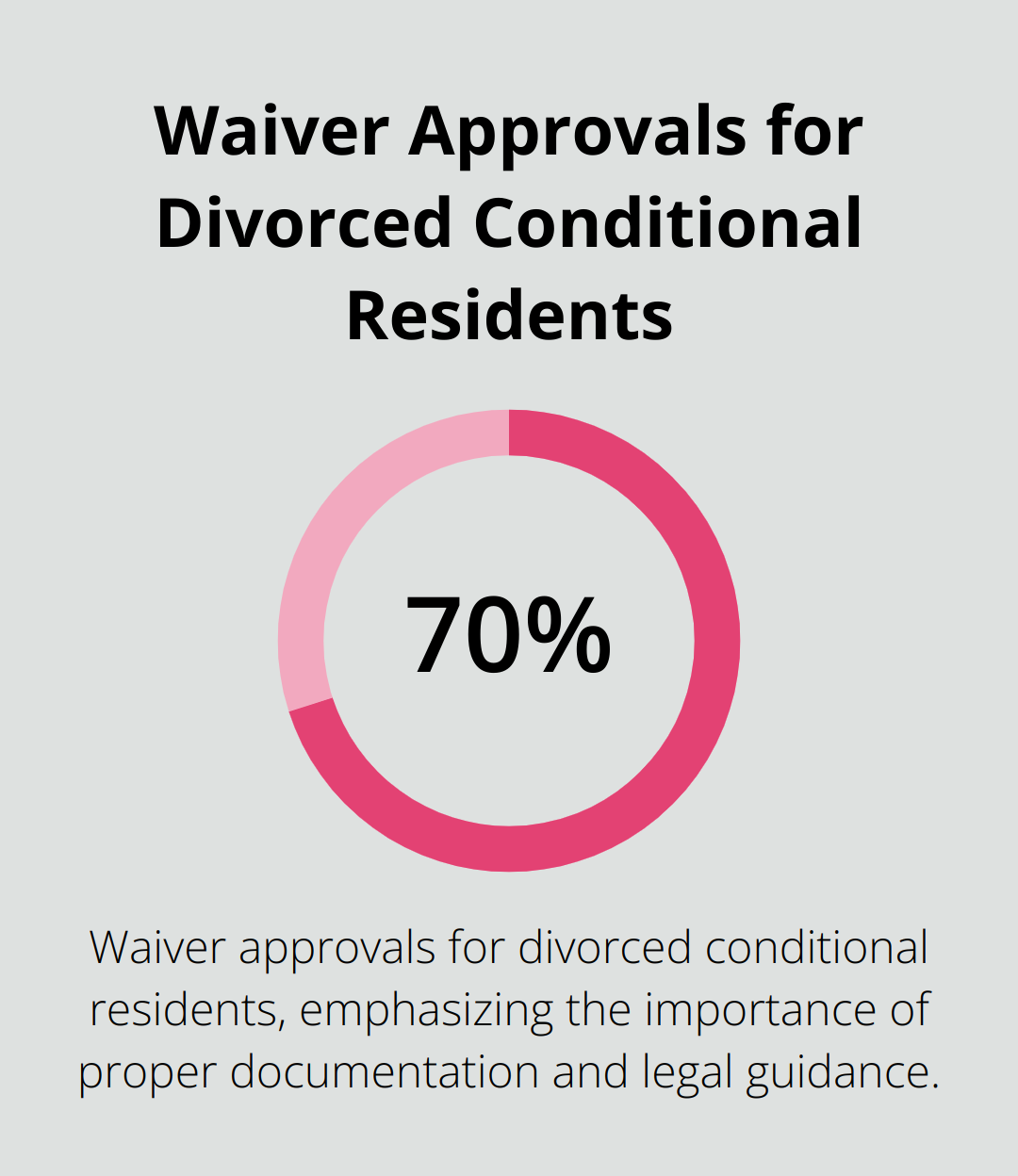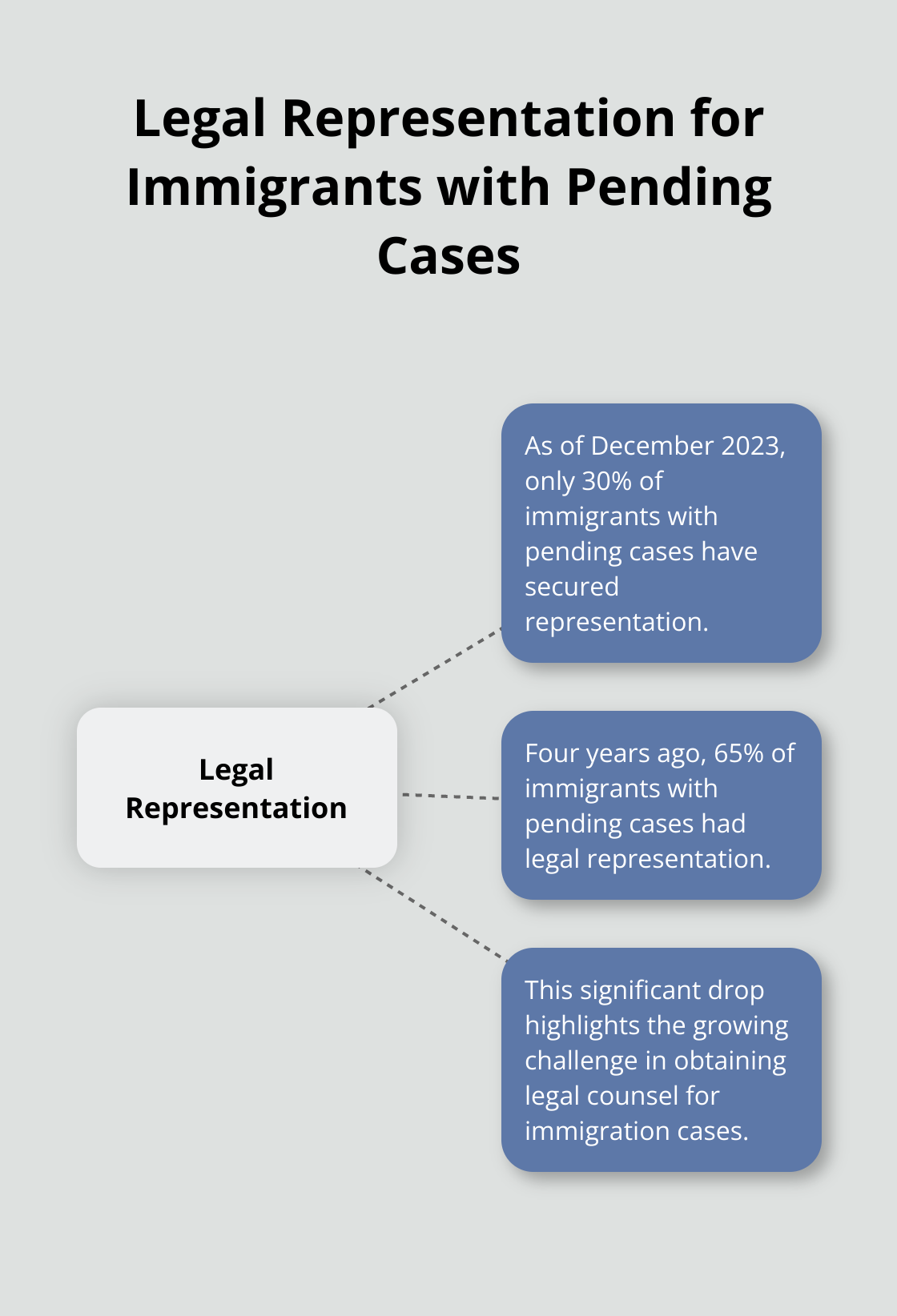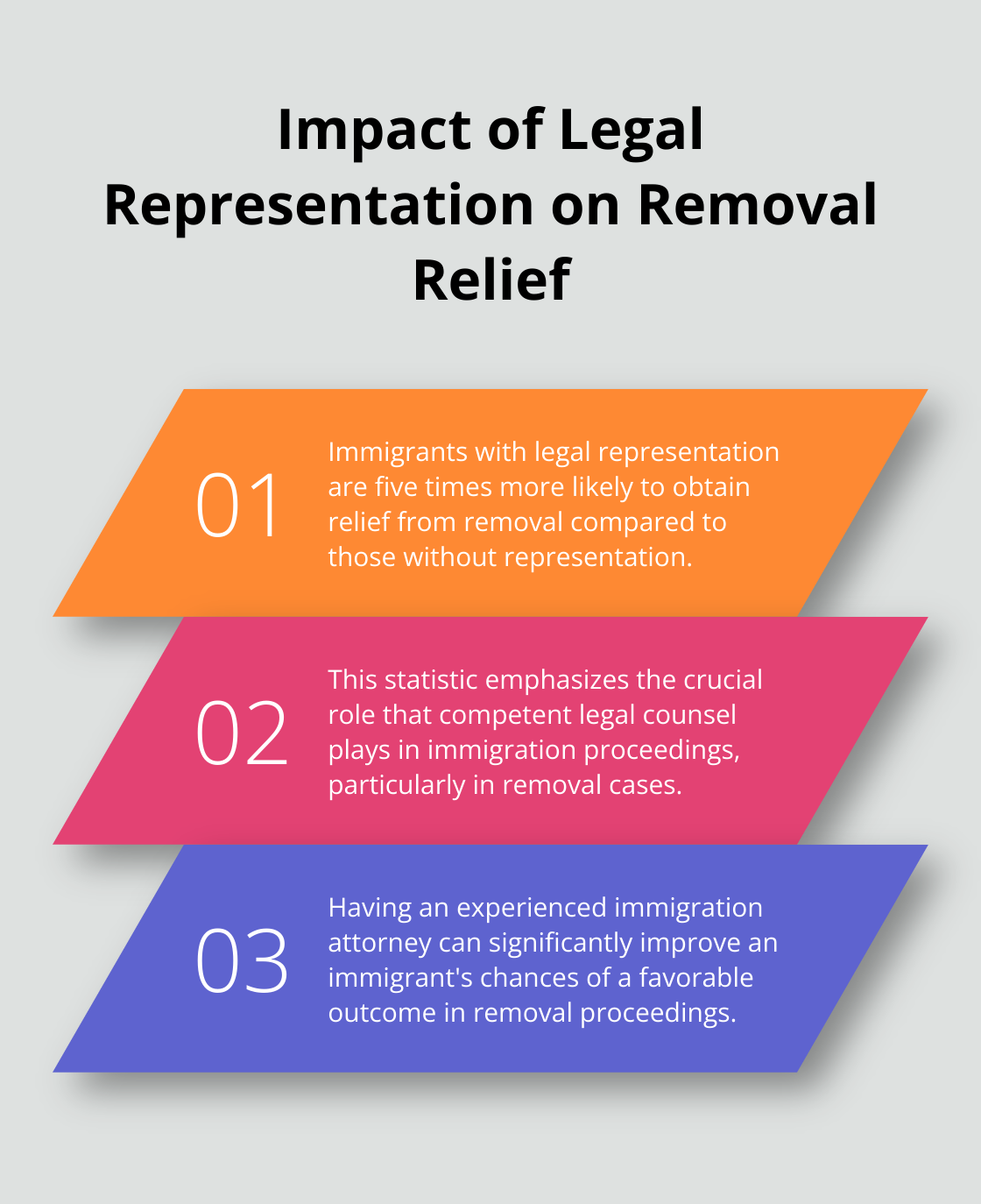
How to Handle Divorce During Adjustment of Status
Navigating a divorce before adjustment of status can be a complex and emotionally challenging process. At Law Offices of Jeffrey A. Thompson, we understand the intricate legal implications this situation presents for immigrants.
Our blog post will guide you through the steps to take, potential outcomes, and legal options available when facing divorce during the adjustment of status process. We’ll provide practical advice to help you protect your immigration status and make informed decisions during this difficult time.
How Divorce Impacts Adjustment of Status
The Adjustment of Status Process
Adjustment of Status allows eligible individuals to apply for lawful permanent residence while in the United States. For marriage-based applications, USCIS scrutinizes the relationship to ensure it’s genuine. A divorce during this process raises red flags and complicates the application.
Divorce and Pending Applications
If divorce occurs while your Adjustment of Status application is pending, it typically results in a denial. USCIS requires applicants to maintain eligibility from the time of filing until approval. A divorce breaks the very basis of a marriage-based application.
Marriage-based green card applications have a relatively high approval rate, but sometimes they do get denied. If you face this situation, you must act quickly. You need to inform USCIS of your changed marital status by submitting a written request to withdraw your application.
Conditional Permanent Residents and Divorce
For those married less than two years when granted permanent residence, the stakes rise even higher. As a conditional permanent resident, you must file Form I-751 jointly with your spouse to remove conditions on your residency.
If divorce occurs before filing this form, you’ll need to file a waiver request. This process requires substantial evidence to prove your marriage was entered in good faith. According to USCIS data, waiver approvals for divorced conditional residents hover around 70%, which emphasizes the importance of proper documentation and legal guidance.

Legal Implications and Timing
The timing of your divorce can significantly affect your immigration status. If you divorce after obtaining your green card but before you become eligible for naturalization, you may need to wait longer to apply for citizenship.
(For example, if you divorce before the three-year mark of having your green card through marriage to a U.S. citizen, you’ll need to wait five years from the date you received your green card to apply for naturalization.)
Exploring Alternative Options
In some cases, you may qualify for other immigration benefits even after a divorce. These could include:
- Employment-based visas
- Family-based petitions through other relatives
- Special immigrant visas
- Humanitarian relief options
Each of these alternatives comes with its own set of requirements and challenges. A qualified immigration attorney can help you determine which options might be available to you based on your specific circumstances.
The complexities of divorce during Adjustment of Status underscore the need for expert legal guidance. As we move forward, let’s examine the specific steps you should take when facing divorce during this critical immigration process.
Steps to Take When Facing Divorce During Adjustment of Status
Seek Immediate Legal Counsel
The moment you realize divorce is imminent, contact an experienced immigration attorney. An attorney can assess your specific situation and develop a tailored strategy to protect your immigration status.
Recent data shows that as of December 2023, only 30% of immigrants with pending cases have secured representation, down from 65% just four years ago. This statistic highlights the importance of seeking professional guidance when navigating complex immigration issues.

Gather and Organize Documents
Collect all immigration-related documents, including your initial application, any correspondence with USCIS, and evidence of your good faith marriage. This may include joint bank statements, lease agreements, and photos. Create a chronological file of your immigration history.
Organize your documents meticulously, as this can become the cornerstone of your case if you need to file for a waiver.
Notify USCIS Promptly
Inform USCIS about your change in marital status as soon as possible. Failure to do so can lead to accusations of fraud, which carries severe consequences. Submit a written statement that explains your situation and any changes to your application.
Explore Alternative Immigration Options
With your attorney, investigate alternative immigration pathways. This might include employment-based visas, family-sponsored options, or humanitarian relief. Each option has its own requirements and processing times, so a thorough evaluation becomes necessary.
Prepare for Potential Outcomes
While you hope for the best, prepare for various scenarios. This preparation might involve:
- Gathering evidence to support a waiver application
- Researching alternative visa categories
- Understanding the timeline for potential removal proceedings
(Your attorney can guide you through each of these possibilities, ensuring you’re ready for whatever outcome may arise.)
As we move forward, let’s examine the potential outcomes and legal options available to those facing divorce during the adjustment of status process. Understanding these possibilities will help you make informed decisions and take appropriate action to protect your immigration status.
It’s important to note that while your divorce may not affect your immigration status, it will affect the time you must wait before applying for your naturalization.
What Happens After Divorce During Adjustment of Status?
Continuing the Adjustment Process Independently
Some immigrants can continue their adjustment of status process independently after a divorce. This option applies primarily to those who have obtained conditional permanent residence and are within the two-year conditional period. However, these individuals must file Form I-751 with a waiver request instead of jointly with their spouse.
Filing for a Waiver
Divorce during the adjustment of status process often necessitates a waiver of the joint filing requirement. This process requires substantial evidence to prove the marriage was entered in good faith. Key documents may include:
- Joint financial records
- Shared lease agreements
- Photos and correspondence demonstrating a genuine relationship
- Affidavits from friends and family
Exploring Alternative Immigration Pathways
Divorce does not necessarily end an immigrant’s journey. Depending on individual circumstances, other visa categories or relief options may be available:
- Employment-based visas: These visas suit individuals with specialized skills or those with an employer willing to sponsor them.
- Family-based petitions: Other family members may be able to sponsor the immigrant for permanent residence.
- Special immigrant visas: Certain professions or circumstances may qualify an individual for these visas.
- Humanitarian relief: In some cases, an individual may be eligible for asylum, U visa, or other humanitarian-based relief.
(Each of these alternatives has unique requirements and processing times, making a thorough evaluation with an experienced immigration attorney essential.)
Preparing for Potential Removal Proceedings
In some instances, divorce during the adjustment of status process may lead to removal proceedings. While daunting, proper preparation can significantly improve the chances of a favorable outcome.
If an immigrant receives a Notice to Appear (NTA), they should immediately consult with an immigration attorney. An attorney can help the individual understand their rights, explore possible defenses, and prepare for the hearing.
Key steps in preparing for removal proceedings include:
- Gathering all relevant documentation related to immigration history
- Identifying potential forms of relief
- Preparing testimony and evidence to support the case
Competent legal representation can make a substantial difference in removal proceedings. A study by the American Immigration Council found that immigrants with legal representation are five times more likely to obtain relief from removal compared to those without representation.

It’s crucial to note that changes in address must be reported within 10 days of moving, as failure to do so can result in fines and other consequences under U.S. immigration law.
Final Thoughts
Divorce before adjustment of status presents complex challenges that require immediate action. Informing USCIS promptly about marital status changes helps avoid fraud accusations. Gathering and organizing relevant documentation forms the foundation of your case, especially for waiver applications.
Professional legal guidance proves invaluable when navigating this difficult process. We at Law Offices of Jeffrey A. Thompson specialize in immigration law and offer expert advice tailored to your specific situation. Our team understands the intricacies of immigration processes and can help you protect your status.
Alternative pathways may exist, including employment-based visas or humanitarian relief. (These options come with unique requirements and processing times.) Exploring all available options and preparing for potential outcomes allows you to make informed decisions and take appropriate action to safeguard your future in the United States.


